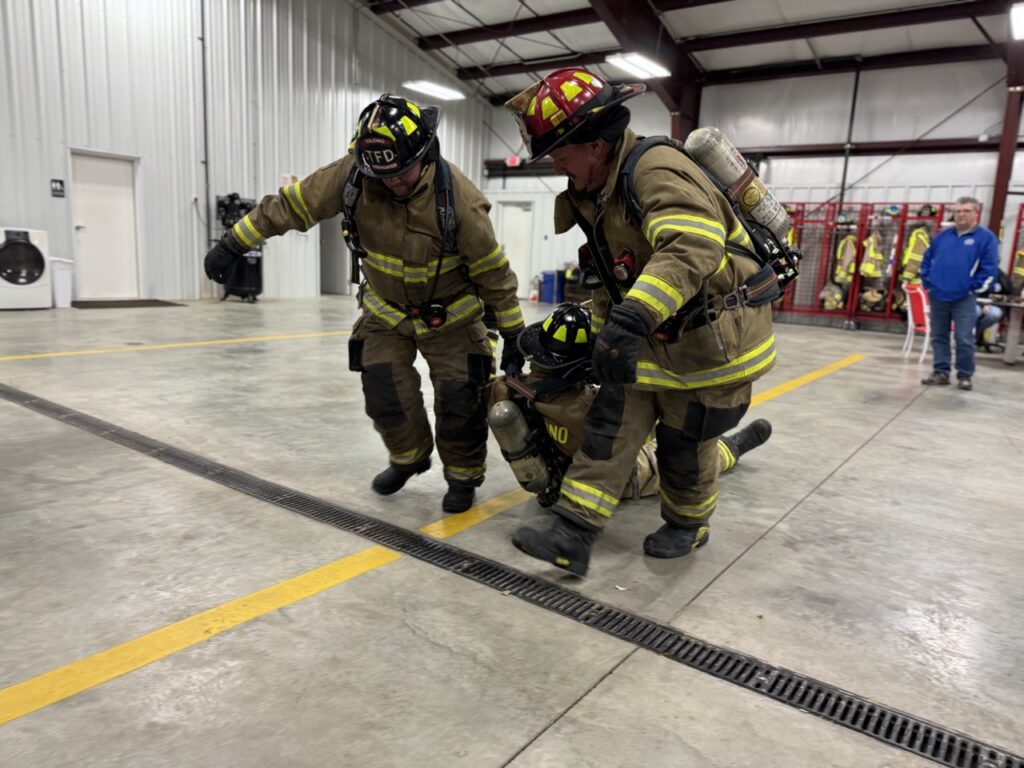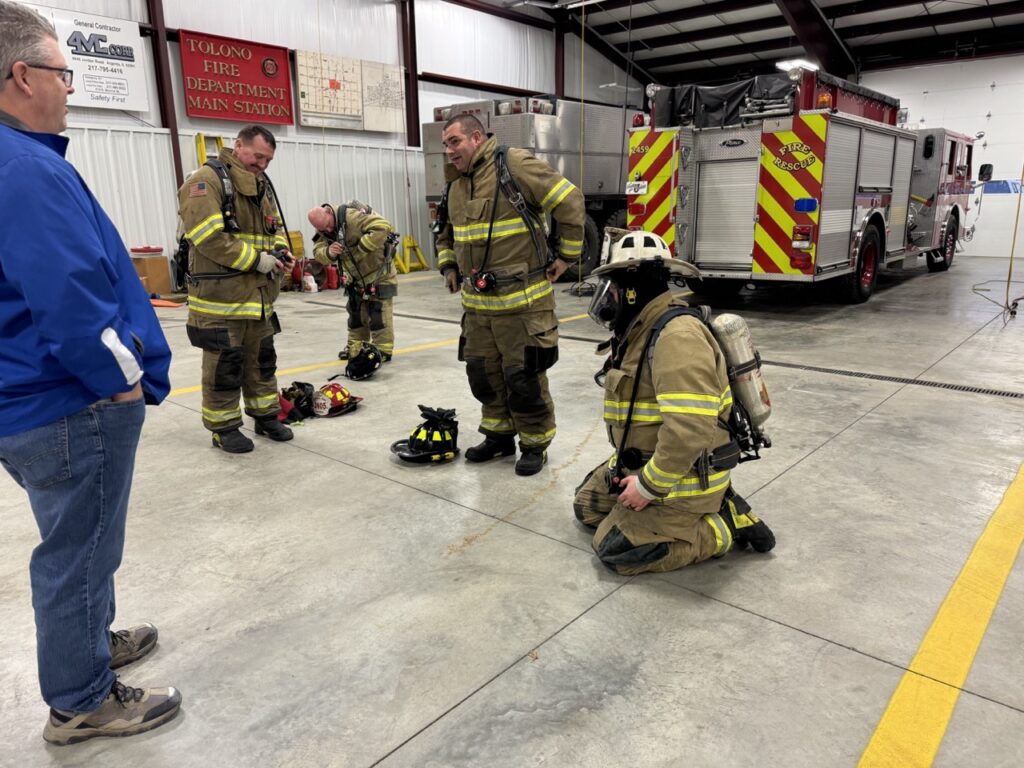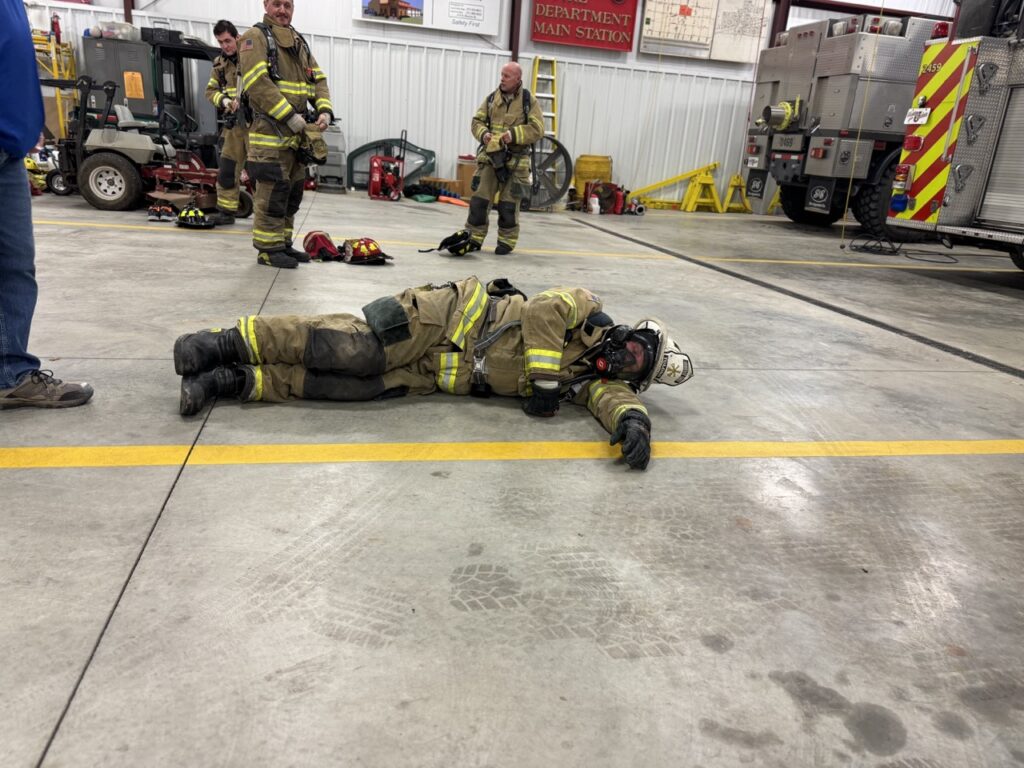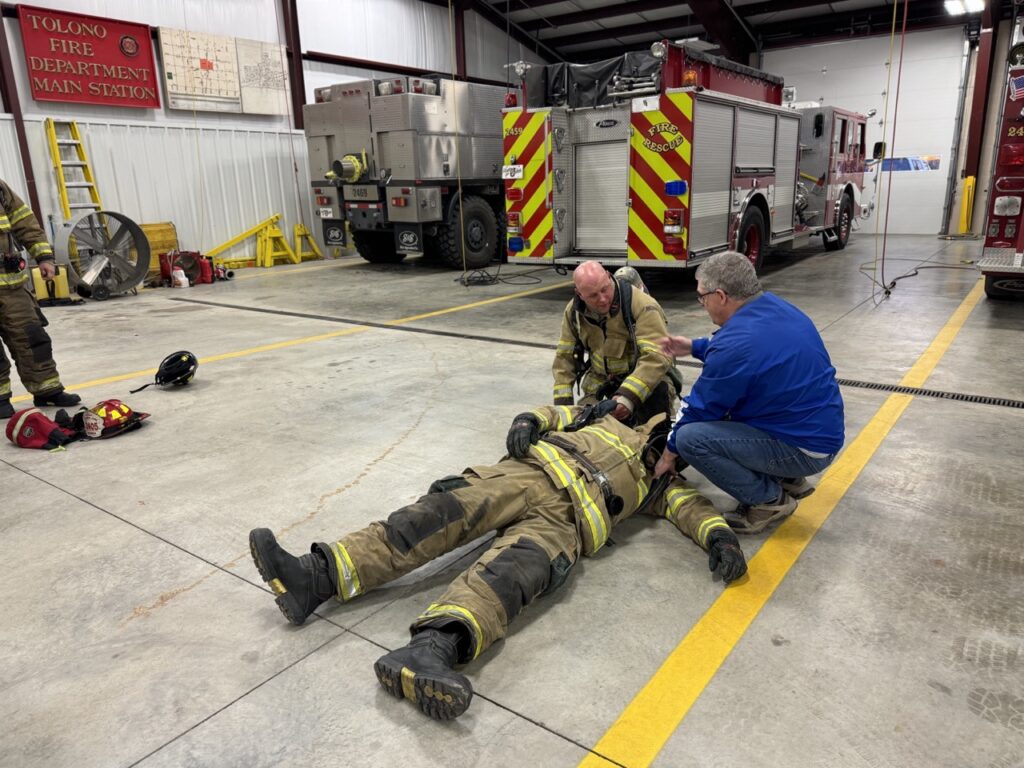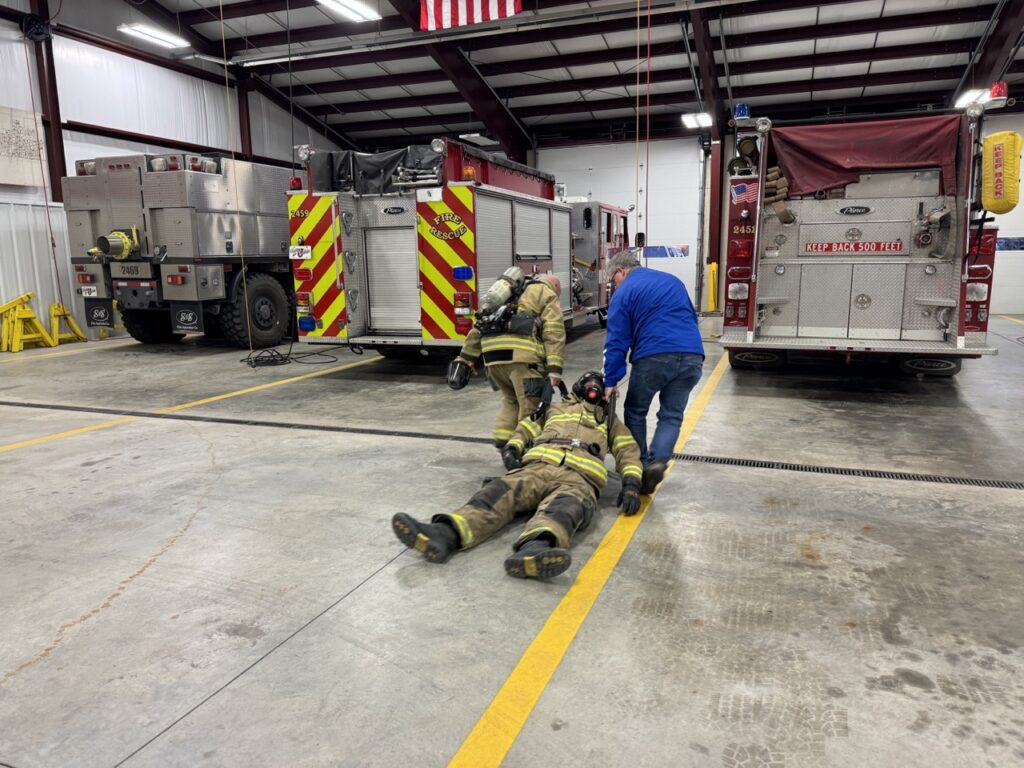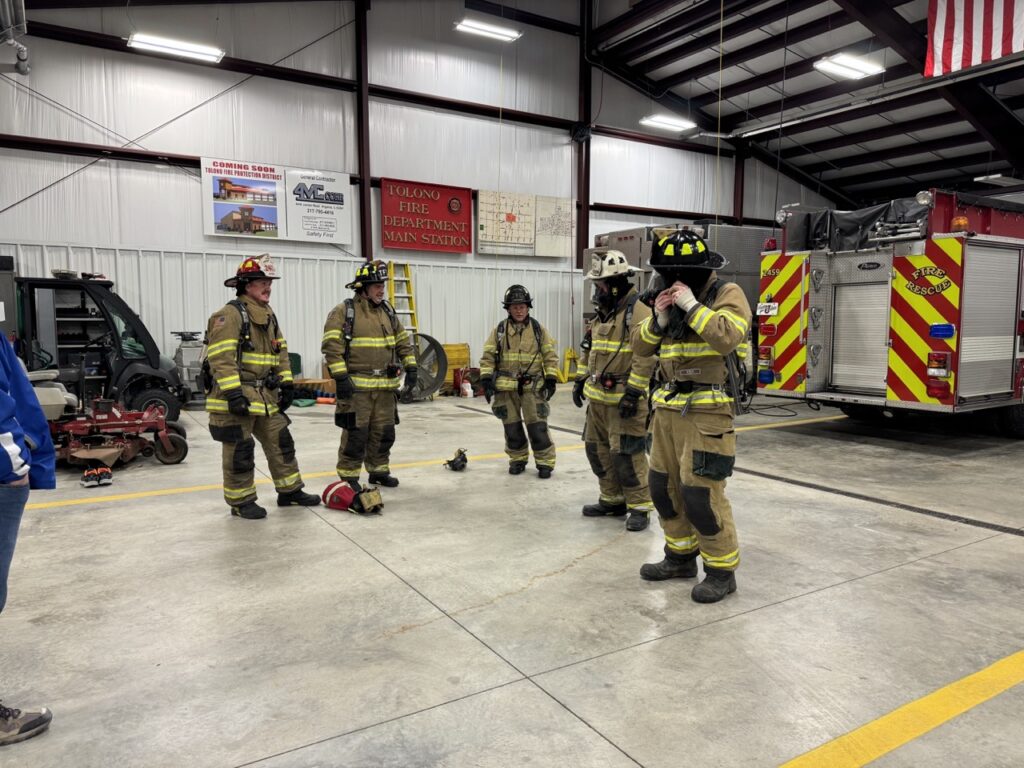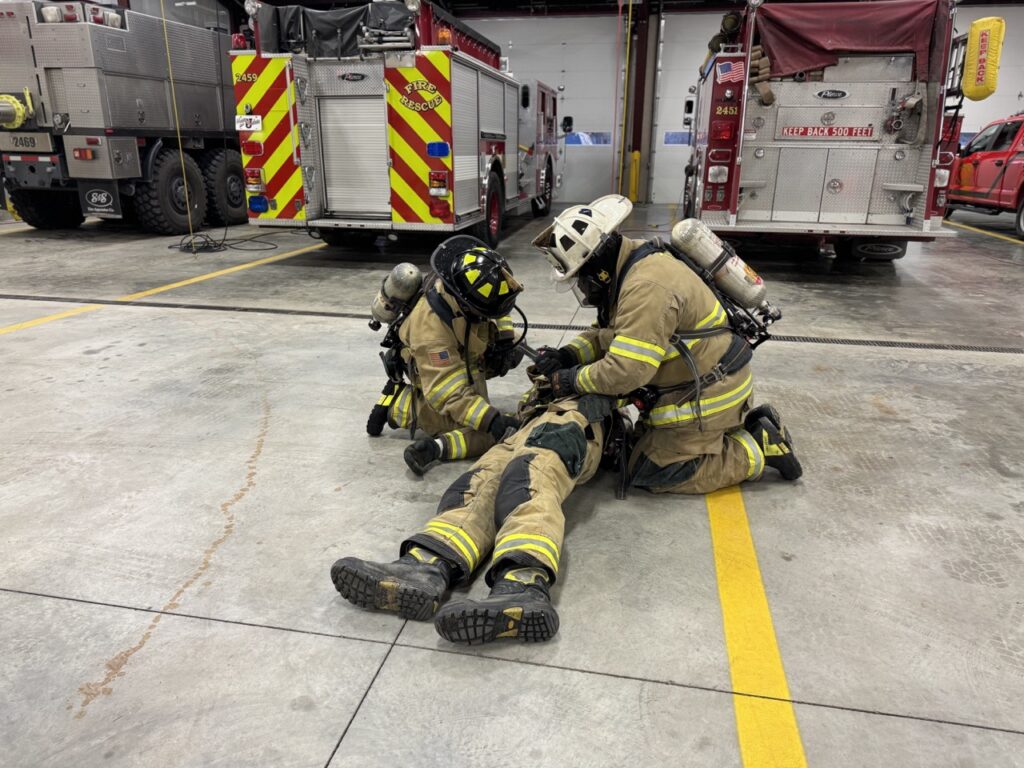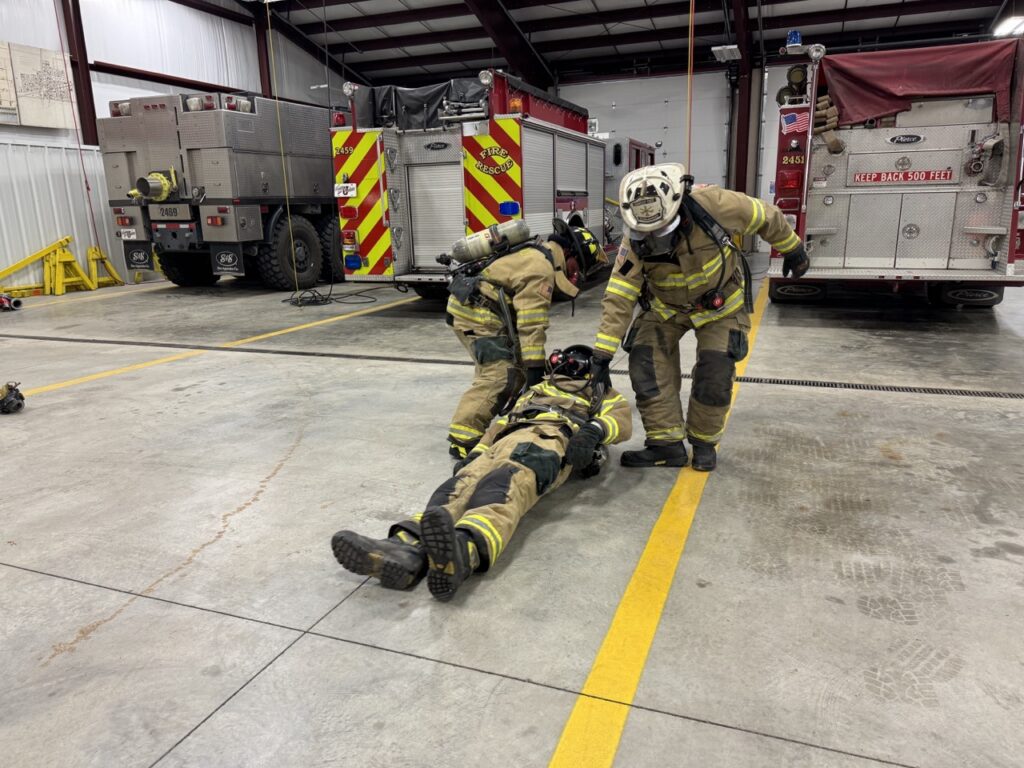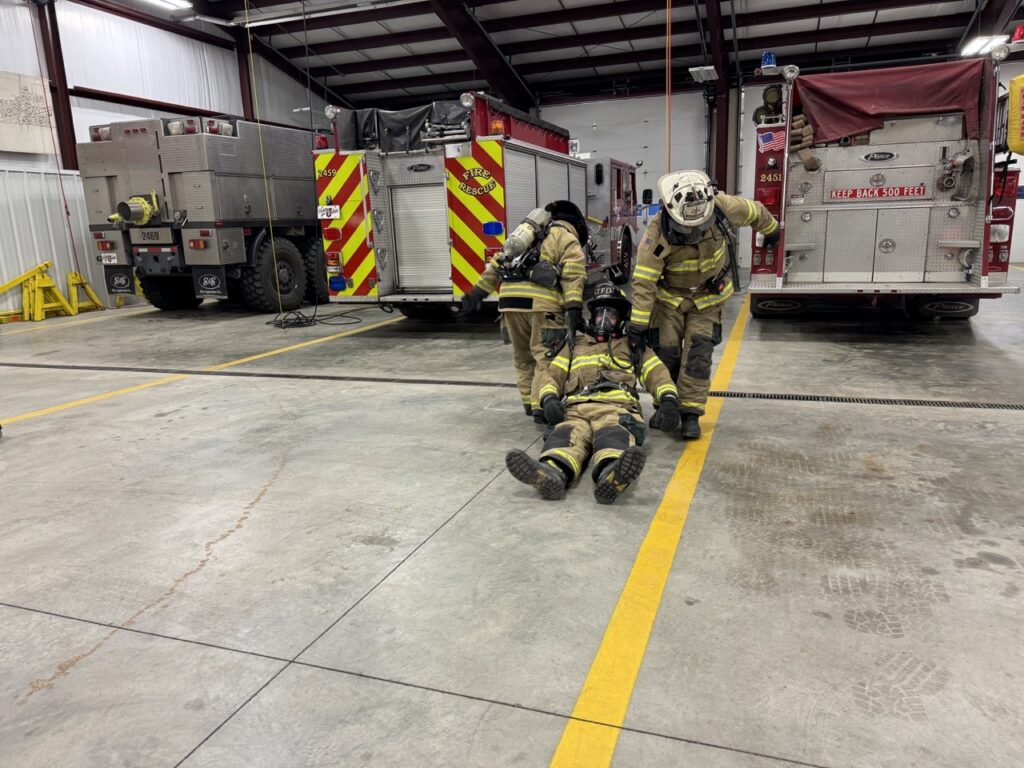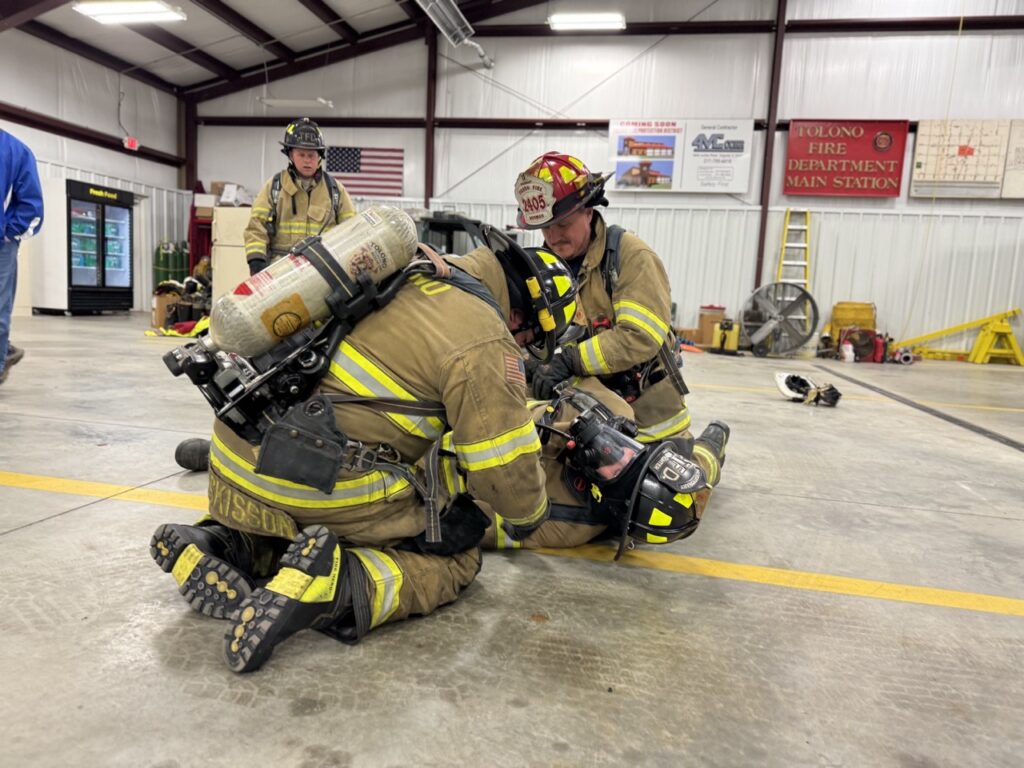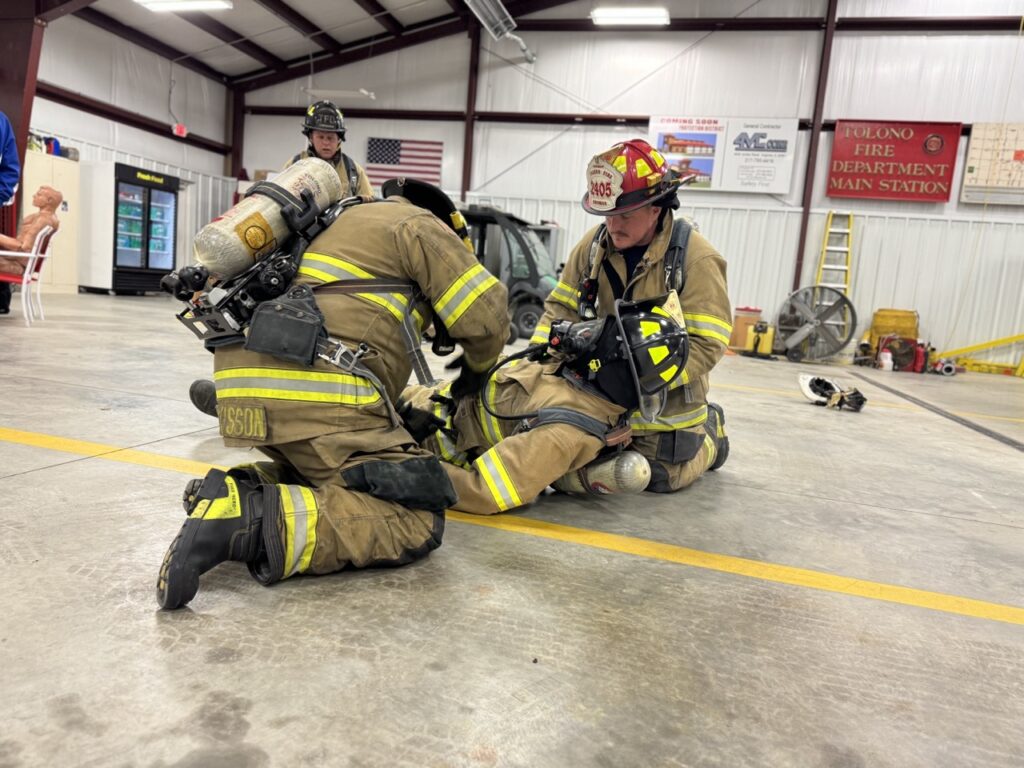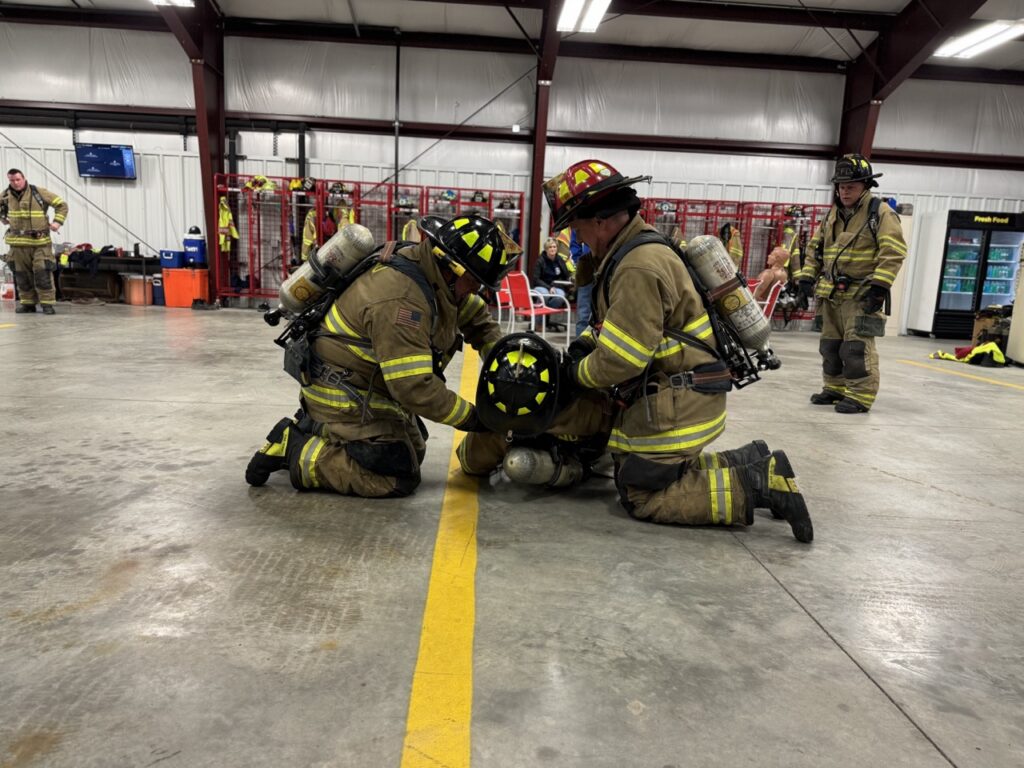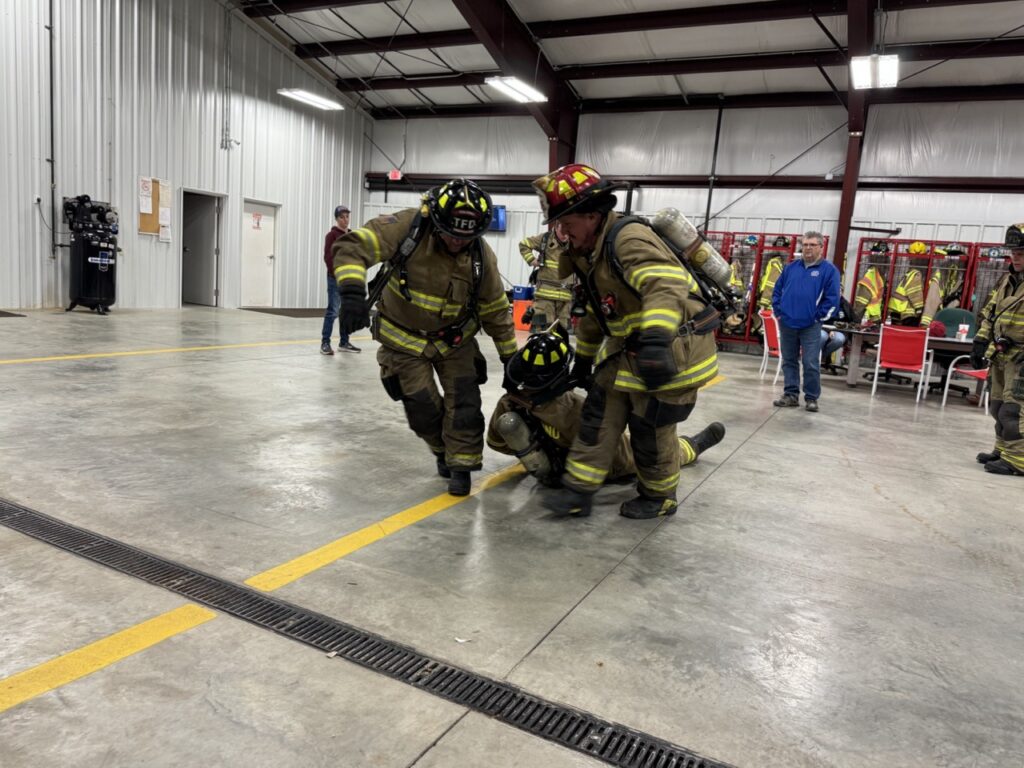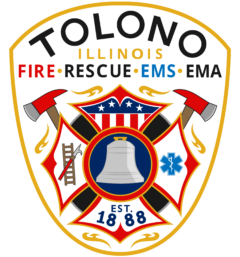On Monday, March 18th, Tolono FPD members participated in RIT training. What is RIT? Read below and see some pictures from training.
In the world of firefighting, where every second counts and danger lurks around every corner, the concept of a Rapid Intervention Team (RIT) stands as a critical element in ensuring the safety and well-being of firefighters themselves. But what exactly is a Rapid Intervention Team, and why do firefighters undergo rigorous training for it?
What is a Rapid Intervention Team?
A Rapid Intervention Team, often abbreviated as RIT, is a specialized group within a fire department that is dedicated to one primary mission: rescuing fellow firefighters in distress during an emergency operation. These highly trained individuals are on standby during firefighting operations to provide immediate assistance if a firefighter becomes trapped, injured, lost, or otherwise incapacitated while battling a blaze.
Why Do Firefighters Train for RIT?
The training for Rapid Intervention Teams is extensive and multifaceted, reflecting the critical nature of their role. Here are several key reasons why firefighters undergo rigorous training for RIT:
- Emergency Preparedness: Firefighters face unpredictable and hazardous situations on a regular basis. By training for RIT, firefighters are better prepared to respond swiftly and effectively in case one of their own encounters trouble.
- Teamwork and Coordination: RIT training emphasizes teamwork, coordination, and communication skills among firefighters. These are essential for executing efficient rescue operations, especially in high-stress environments where split-second decisions can mean the difference between life and death.
- Specialized Techniques: RIT training equips firefighters with specialized techniques and tools for firefighter rescue scenarios. This includes skills such as breaching walls, navigating confined spaces, and utilizing rescue equipment like ropes, harnesses, and thermal imaging cameras.
- Risk Mitigation: Firefighting inherently carries risks, and RIT training helps mitigate those risks by ensuring that there is always a dedicated team ready to respond in the event of an emergency. This proactive approach enhances overall safety for both firefighters and potential victims.
- Camaraderie and Brotherhood: The bonds forged through RIT training foster a strong sense of camaraderie and brotherhood/sisterhood among firefighters. Knowing that they have each other’s backs creates a supportive environment where trust and mutual reliance are paramount.
In conclusion, a Rapid Intervention Team is not just another component of a fire department’s organizational structure; it is a lifeline, a last line of defense for firefighters operating in hazardous conditions. Through rigorous training and unwavering dedication, firefighters prepare themselves to confront the dangers of their profession head-on, ensuring that they are always ready to respond when their comrades need them most.
